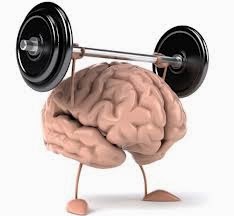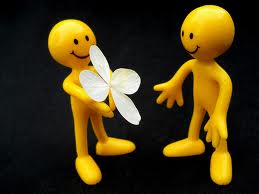Dear Bloggers,
We just celebrated Sinterklaas something similar to Christmas only thing that I still don't understand is that parent's want to buy off their guilt feelings with bigger and bigger presents. They better should be worried by the future and our planet. We absolutely could live with less stuff as long a gift comes from the heart.
If Christmas is about presents, then in 2014, my
little family and I will have no more Christmas. I mean, we love the caroling
and the uncle playing the piano and the cousins running around with my ten year
old, daughter and the grandfather trying to get her to sit on his lap and en
joying all the good food.
We have, in other words, an amazingly good time.
What we didn’t have, though, was the average €500 hole
in our bank accounts, gouged out by Sinterklaaspresent spending.
(In the
Netherlands we celebrate Sinterklaas like Christmas on the 5th of
December) This year we did things a bit different. Nor did we have the credit limit
like other years. No, this year only our youngest got something extra but the
rest of us got only a few useful items and none of those gifts were what we
didn’t really want. We only had one stressful rush of last-minute crowds at the
mall.
Without the big presents, you see, we didn’t have the
sensation that I, at least, normally associated with Sinterklaas, the stress.
And without stress or presents, it’s not Sinterklaas, right? But of course it
was. To me it was the best of Sinterklaas, the part that, research shows, makes
people happiest. It was all the upside without the downside.
Let me back this up.
From November 2012 to November 2013, I and my little
family, one wife, one teen girl, one minor child and two cat’s embarked on a
lifestyle experiment in which we tried to live with a lower environmental
impact. Among other measures, the experiment included not buying trash and not
buying new gadgets that appear later on to be useless anyway.
This may sound like a lot of meaningless
self-deprivation, but the question that we wanted to answer was this: Does
consuming a fewer resources actually make you feel like deprivation, or is it
possible that consuming less opens up another way of life that provides a more
enduring satisfaction? Or let me put it another way, can we find a win-win way
of life that might be happier both for us and for the whole planet? All big
things will start somewhere small in my opinion!
My wife drives the family vehicle. In my little world,
cars are a big item I drive a nearly 20 year old environmental unfriendly
Peugeot. There are others and it is time to find a newer car with less carbon
emission. No, I cannot afford to drive a newer emission free model as I have no
financial resources for that, no carbon emissions. Like going by push bike is
not an option for me as my work is more than 30 kilometers away unfortunately.
On the other hand, eating and shopping local and
riding bikes instead of driving cars when possible allowed us to lose the so
called spare tires around our guts, cure ourselves of longstanding skin
problems and insomnia and become generally healthier.
Our experiences illustrated that some uses of
planetary resources improve quality of life and some may not. Indeed, we could
go a long way toward dealing with the crisis in our planetary habitat.
But as Sinterklaas approached this year, the more
pressing question for us was, did the season’s huge consumption of resources
add something to the Sinterklaas experience or not? Since one-sixth of all
retail sales occurs during the holiday season, it’s a question worth asking.
Despite the fact that people spend relatively large
portions of their income on gifts, as well as time shopping for and wrapping
them, such behavior apparently contributes little to holiday joy.
I’ve already told you enough to let you guess how my
little family’s experience played out, but you may be surprised to learn that
our findings are backed up by bona fide psychological research.
Of course, this makes perfect sense. We all know in
our hearts that treasuring meaningful experiences and spending time in valued
relationships at Sinterklaas, Christmas or any other part of the year make us
happier than getting more stuff.
But try telling that to the grandparents at Sinterklaas
or Christmas time!
The trick to a happy, sustainable, non-consumptive Sinterklaas
was not, we discovered, to ignore the expectations of the people we celebrated
with. We didn’t want our loved ones to feel bad. Those who expected presents
should get them, we decided. Gifts, after all, are associated with the exchange
of love.
Still, my wife, worried very much that it would be
hard for the kids if all the cousins had presents to open and they didn’t. Try
saying, “The research says you’ll be happier with less.” to a ten year old.
So we
got her some toys and contributed some toys that she had outgrown, to the poor and
we wrapped them for Sinterklaas as she had not even unpacked them.
When present-opening time came, my eldest daughter
didn’t care whether the present that she was opening was for her or not. Much
to our surprise, she didn’t even nag about the fact that she got less this year
than her little sister. What was important to her was what turned out to be
important to us: the singing, the poems, the laughter, the time spent with
family, and of course, the celebration.
Here I gathered some adorable gift ideas that will be affordable, adorable,
and festive.
Gifts for Teachers & Tutors
Truly great teachers deserve some special recognition for their hard work
and dedication. Show your appreciation at any time with a homemade cookie jar.
Simply choose a glass jar with lid and fill it with your choice of ready to eat
cookies or layered cookie mix. Attach a label that says, “You are one smart
cookie!” and tie a festive ribbon around the neck of the jar. This is also a
wonderful gift for someone in a nursing home, although a plastic jar is
recommended for safety reasons.
Gifts for Bus Drivers & Postal Workers
These hard working definitely deserve a nice gift to remind them how much
we appreciate their dedication and efforts. For a great gift with almost no
fuss, buy a six pack beer and affix a big ribbon and homemade gift tag with the
words, “You’re an awesome Bus Driver” or whichever title fits your needs.
Finish the gift by attaching a delicious bag of candies and viola… a wonderful
and inexpensive gift. This gift is also wonderful for your child’s best friend.
Gifts for Beauticians and Housekeepers
This is a wonderful gift idea for those on your list whose hands and nails
could use a little spoiling. Choose an attractive glass jar and fill it with
lotion, nail polish, cotton balls, nail polish remover, emery boards, and all
the goodies necessary for a luxurious manicure. Tie festive ribbon around the
neck and affix a special bow for the top for a sweet treat - a Manicure in a
Jar.
Christmas or Sinterklaas is an opportunity to be creative and discover new
ways to save money while appreciating everyone who makes life just a bit more
enjoyable. These gifts can be altered to suit just about anyone on your Holiday
list.
A gift that is given from the heart is more beautiful. I would say try it
and stay on the budget it is more fun to give love than what money can buy.
The Old Sailor,





















































And of course, do actually contribute to the conversation! Listening properly doesn’t mean you don’t add any value to the conversation. Make sure your verbal communication is an equal and two way process.
5. Build Empathy and Rapport